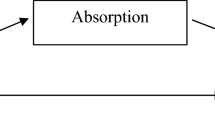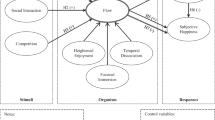Abstract
To date the most popular and sophisticated types of virtual worlds can be found in the area of video gaming, especially in the genre of Massively Multiplayer Online Role Playing Games (MMORPG). Game developers have made great strides in achieving game worlds that look and feel increasingly realistic. However, despite these achievements in the visual realism of virtual game worlds, they are much less sophisticated when it comes to modeling face-to-face interaction. In face-to-face, ordinary social activities are “accountable,” that is, people use a variety of kinds of observational information about what others are doing in order to make sense of others’ actions and to tightly coordinate their own actions with others. Such information includes: (1) the real-time unfolding of turns-at-talk; (2) the observability of embodied activities; and (3) the direction of eye gaze for the purpose of gesturing. But despite the fact that today’s games provide virtual bodies, or “avatars,” for players to control, these avatars display much less information about players’ current state than real bodies do. In this paper, we discuss the impact of the lack of each type of information on players’ ability to tightly coordinate their activities and offer guidelines for improving coordination and, ultimately, the players’ social experience.
Similar content being viewed by others
References
Bartle Richard A. (2003) Designing Virtual Worlds. New Riders, Indianapolis
Benford S., Bowers J., Fahlén L.E., Greenhalgh C. (1994) Managing Mutual Awareness in Collaborative Virtual Environments. In: Singh G., Feiner S.K., Thalmann D. (eds), Proceedings of Virtual Reality Software and Technology. Singapore, World Scientific Publishing Co. Pte. Ltd
Benford S.D., Bowers J.M., Fahlen L.E., Greenhalgh C.M., Snowdon D.N. (1997). Embodiments, Avatars, Clones and Agents for Multi-user, Multi-sensory Virtual Worlds. Multimedia Systems 5(2):93–104, Springer-Verlag
Bly Sara, Steve R. Harrison, Susan Irwin (1993) Media Spaces: Bringing People Together in a Video, Audio, and Computing Environment. Communications of the ACM 36(1):28–47, January
Bowers, John, James Pycock and Jon O’Brien (1996): Talk and Embodiment in Collaborative Virtual Environments. In Proceedings of the SIGCHI Conference on Human Factors in Computing Systems: Common Ground. New York: ACM Press, pp. 58–65
Brown, Barry and Marek Bell (2004): CSCW at Play: ‘There’ as a Collaborative Virtual Environment. Proceedings of the 2004 ACM Conference on Computer Supported Cooperative Work. NY, USA: ACM Press, pp. 350–359
Castronova, Edward (2001): Virtual Worlds: A First-Hand Account of Market and Society on the Cyberian Frontier, (December 2001). CESifo Working Paper Series No. 618. Available at SSRN: http://ssrn.com/abstract=294828
Cherny Lynn (1999): Conversation and Community: Chat in a Virtual World. Palo Alto, CA, CSLI Publications
Curtis, Pavel (1997): Mudding: Social Phenomena in Text-Based Virtual Realities. In S. Kiesler (ed.): Culture of the Internet. Hillsdale, NJ: Erlbaum, pp. 121–142
Dourish, Paul and Victoria Bellotti (1992): Awareness and Coordination in Shared Workspaces. In Proceedings of The ACM conference on Computer-Supported Cooperative Work, Toronto, Ontario, Canada. NY, USA: ACM Press, pp. 107–114
Garcia Angela, Jacobs J. (1999) The Eyes of the Beholder: Understanding the Turn-taking System in Quasi-synchronous CMC. Research on Language and Social Interaction 32(4):337–367
Garfinkel Harold (1967): Studies in Ethnomethodology. Englewood Cliffs, N.J., Prentice-Hall
Garfinkel, Harold (1988): Evidence for Locally Produced, Naturally Accountable Phenomena of Order, Logic, Reason, Meaning, Method, etc. in and as of the Essential Quiddity of Immortal Ordinary Society (I of IV): An Announcement of Studies. Sociological Theory, vol. 6, pp. 10–39
Grinter Rebecca E. and Leysia Palen (2002): Instant Messaging in Teen Life. Proceedings of the 2002 ACM Conference on Computer Supported Cooperative Work, CSCW 2002, New Orleans, LA. New York, pp. 21–30
Gibson William (1984) Neuromancer (Remembering Tomorrow). New York, Ace Books
Goffman Erving (1959) The Presentation of Self in Everyday Life. New York, Doubleday
Goodwin Charles (1979) The Interactive Construction of a Sentence in Natural Conversation. In: George Psathas (ed), Everyday Language: Studies in Ethnomethodology. New York, Irvington Publisher, pp. 97–121
Goodwin Charles (1986) Gesture as a Resource for the Organization of Mutual Orientation. Semiotica 62:29–49
Heath Christian, Paul Luff (1992) Collaboration and Control: Crisis Management and Multimedia Technology in London Underground Line Control Rooms. Computer Supported Cooperative Work 1:69–94
Heritage John (1984) Garfinkel and Ethnomethodology. Cambridge, Polity Press
Herring, S. (1999): Interactional Coherence in CMC. Journal of Computer-Mediated Communication [On-Line], vol. 4, no. 4. http://www.ascusc.org/jcmc/vol4/issue4/herring. html (30/1/03)
Hindmarsh, Jon, Mike Fraser, Christian Heath, Steve Benford and Chris Greenhalgh (1998): Fragmented Interaction: Establishing Mutual Orientation in Virtual Environments. In Proceedings of the 1998 ACM Conference on Computer Supported Cooperative Work. New York: ACM Press, pp. 217–226
Hindmarsh, Jon, Mike Fraser, Christian Heath and Steve Benford (2001): Virtually Missing the Point: Configuring CVEs for Object-Focused Interaction. In Collaborative Virtual Environments, Springer, September 2001, pp. 115–133.
Hindmarsh Jon, Heath Christian (1999) Embodied Reference: A Study of Deixis in Workplace Interaction. Journal of Pragmatics 32:1855–1878
Hine, Christine (2000): Virtual Ethnography. London, Sage
Jefferson Gail (1989) Preliminary Notes on a Possible Metric which Provides for a ‘Standard Maximum’ Silence of Approximately One Second in Conversation. In: Roger D., Bull P. (eds) Conversation: An Interdisciplinary Perspective. Clevedon, Multilingual Matters, pp. 166–96
Kendon, Adam (1980): Gesticulation and Speech: Two Aspects of the Process of Utterance. In M.R. Key (ed.): The Relation between Verbal and Nonverbal Communication. Mouton, pp. 207–227
Lyman P., Wakeford N. (1999). Going into the (Virtual) Field. American Behavioral Scientist 43(3):359–376
Lynch Michael (1993) Scientific Practice and Ordinary Action: Ethnomethodology and Social Studies of Science. New York:Cambridge University Press
Mason, Bruce (1999): Issues in Virtual Ethnography. In K. Buckner (ed.): Ethnographic Studies in Real and Virtual Environments: Inhabited Information Spaces and Connected Communities. Proceedings of Esprit i3 Workshop, Queen Margaret College, Edinburgh, January 1999. pp. 61–69
McGrane Bernard (1994) The Un-TV and the 10 MPH Car: Experiments in Personal Freedom and Everyday Life. Fort Bragg, CA, The Small Press
McNeill David (1992) Hand and Mind: What Gestures Reveal About Thought. Chicago, Chicago University Press
Miller, D and Slater, D. (2000): The Internet: An Ethnographic Approach. Oxford and New York: Berg Publishers
Nardi, Bonnie A., Steve Whittaker, and Erin Bradner (2000): Interaction and Outeraction: Instant Messaging in Action. In Proceedings of CSCW ’2000, Philadelphia, PA. New York: ACM, pp. 1–10
O’Day V., Bobrow D.G., Shirley M. (1998) Network Community Design: A Social-Technical Design Circle. The Journal of Collaborative Computing 7(3–4):315–337
Robinson, Mike, Samuli Pekkola, Jonni Korhonen, Saku Hujala, Tero Toivonen and Markku-Juhani O. Saarinen (2001): Extending the Limits of Collaborative Virtual Environments. In Churchill, Snowdon and Munro (eds.): Collaborative Virtual Environments. Springer-Verlag, pp. 21–42
Ruhleder Karen, Jordan Brigitte (2001) Co-Constructing Non-Mutual Realities: Delay-Generated Trouble in Distributed Interaction. Journal of Computer Supported Cooperative Work 10(1):113–138
Rutter, Jason and G.W.H. Smith (2005): Ethnographic Presence in a Nebulous Setting. In Christine Hine (ed.): Virtual Methods: Issues in Social Research on the Internet. Berg, pp. 81–92
Sacks Harvey, Schegloff Emanuel A., Jefferson Gail. (1974). A Simplest Systematics for the Organization of Turn-taking for Conversation. Language 50:696–735
Schegloff EmanualA. (1968) Sequencing in Conversational Openings. American Anthropologist 70:1075–95
Schegloff EmanualA. (1987) Analyzing Single Episodes of Interaction: An Exercise in Conversation Analysis. Social Psychology Quarterly 50:101–114
Schegloff Emanual A. (1992) Repair After Next Turn: The Last Structurally Provided Defense of Intersubjectivity in Conversation. American Journal of Sociology 98:1295–1345
Schegloff Emanual A. (1998) Body Torque. Social Research 65:535–86
Schegloff Emanual. A., Sacks Harvey (1973) Opening Up Closings. Semiotica 8(4):289–327
Schmidt Kjeld (2002) The Problem with ‘Awareness’. Computer Supported Cooperative Work 11:285–298
Stephenson Neal (1992) Snow Crash. Spectra, New York
Streeck Jurgen (1993) Gesture as Communication I: Its Coordination with Gaze and Speech. Communication Monographs 60(4):275–299
Streeck Jurgen (1995) On Projection. In: Goody E. (eds) Interaction and Social Intelligence. Cambridge, Cambridge University Press, pp. 84–110
Szymanski, Margaret H., Paul Aoki, Erik Vinkhuyzen and Alison Woodruff (forthcoming): Organizing a Remote State of Incipient Talk: Push-to-talk Mobile Radio Interaction. Language in Society, vol. 35, no. 3
Taylor, T.L. (2003): Power Gamers Just Want to Have Fun?: Instrumental Play in a MMOG. In Proceedings of Level Up. University of Utrecht, The Netherlands
Vallis Rhyll (1999) ‘Members’ Methods for Entering and Leaving #IRCbar: A Conversation Analytic Study of Internet Relay Chat. In: Chalmers K., Bogitini S., Renshaw P. (eds) Educational Research in New Times. Flaxton, PostPressed, pp. 117–27
Whalen Jack, Zimmerman Don H., Whalen Marilyn R. (1988) When Words Fail: A Single Case Analysis. Social Problems 35:333–362
Woodcock, Bruce (2005): An Analysis of MMOG Subscription Growth (version 7.0), http://www.mmogchart.com/
Yee, Nick (2005): The Daedalus Project: The Psychology of MMORPGs, http://www.nick yee.com/daedalus/
Zimmerman Don H. (1988) On Conversation: The Conversation Analytic Perspective. In: Anderson J. (eds), Communication Yearbook 11. Beverly Hills, Sage, pp. 406–32
Author information
Authors and Affiliations
Corresponding author
Additional information
“They come here to talk turkey with suits from around the world, and they consider it just as good as a face-to-face. They more or less ignore what is being said—a lot gets lost in translation, after all. They pay attention to the facial expressions and body language of the people they are talking to. And that’s how they know what’s going on inside a person’s head—by condensing fact from the vapor of nuance.” —Neal Stephenson, Snow Crash, 1992
Rights and permissions
About this article
Cite this article
Moore, R.J., Ducheneaut, N. & Nickell, E. Doing Virtually Nothing: Awareness and Accountability in Massively Multiplayer Online Worlds. Comput Supported Coop Work 16, 265–305 (2007). https://doi.org/10.1007/s10606-006-9021-4
Received:
Accepted:
Published:
Issue Date:
DOI: https://doi.org/10.1007/s10606-006-9021-4




